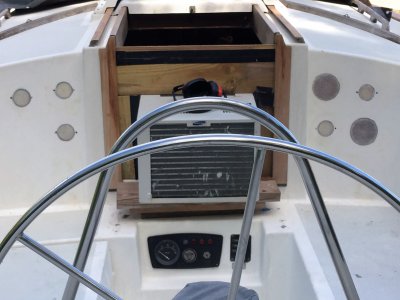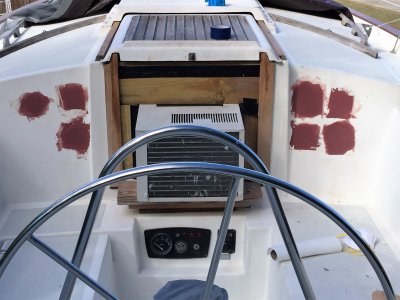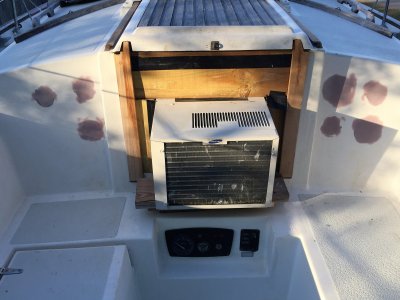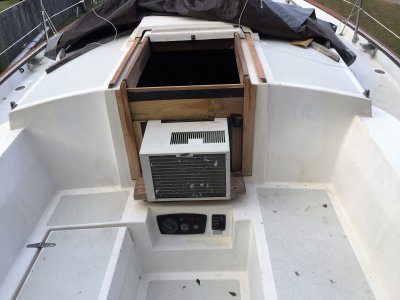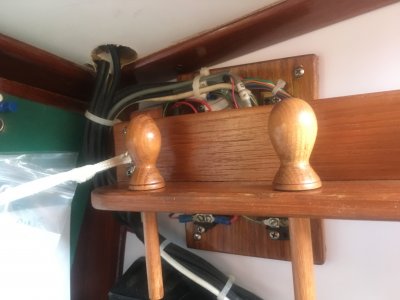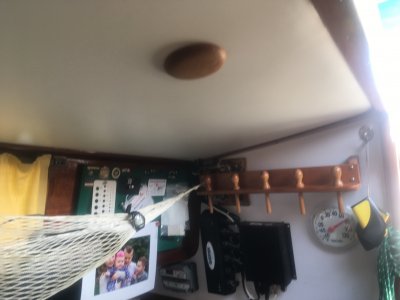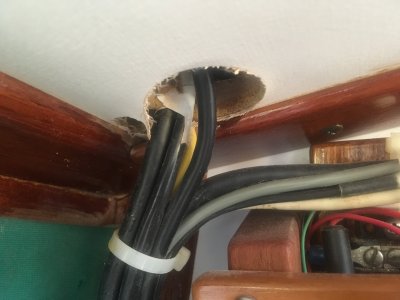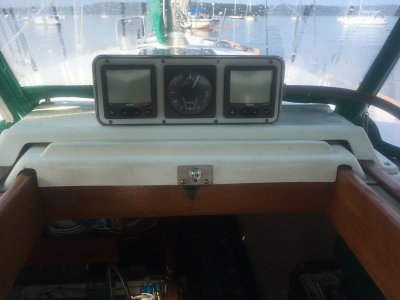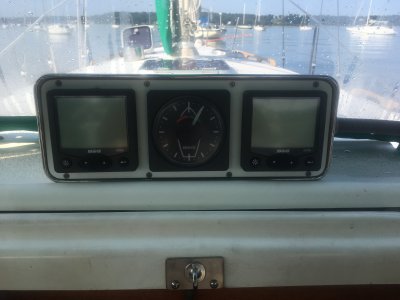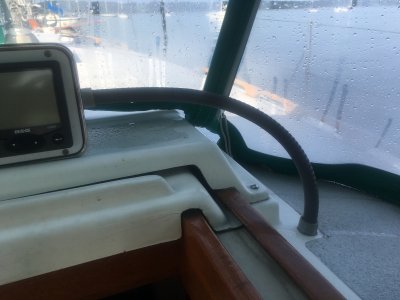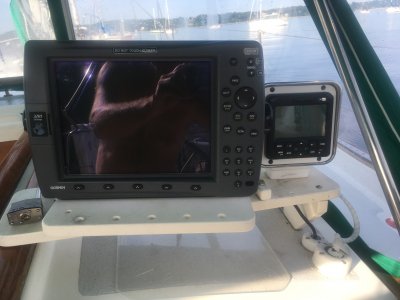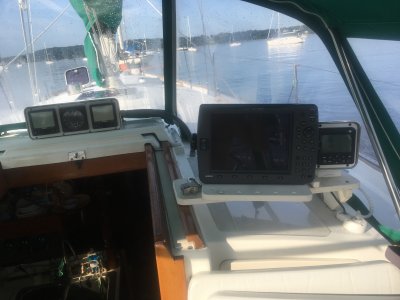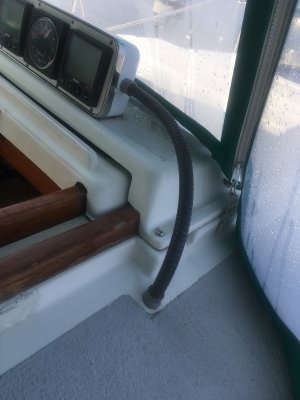jimcleary
James M. Cleary
My spring project was to redo the aft bulkhead in the cabin. The previous owner had the instruments on the cabin bulkhead in the cockpit. They were always a pain because we had to ask people to move so we could see the gauges. When we went to a new instrument package, it was installed over the companionway. The aft bulkhead in the cabin was now marred by the remaining holes. As a temp fix I covered them with scrap pieces of formica just screwed in place. This year the job is permanently completed.
Photo 1 - Port side (galley) with the temp patch.
Photo 2 - Stbd side with temp patch.
Photo 3 - Port side plugged and sanded.
Photo 4 - Stbd side plugged and ready to be sanded.
Photo 6 - Oaktag pattern being created.
Photo 8 - Formica glued in place on port side.
Photo 9 - Stbd side complete with new mouldings.
Photo 10 - Port side complete with new mouldings.
Photo 12 - Galley's new look with fewer teak bulkhead faces.
Jim
Photo 1 - Port side (galley) with the temp patch.
Photo 2 - Stbd side with temp patch.
Photo 3 - Port side plugged and sanded.
Photo 4 - Stbd side plugged and ready to be sanded.
Photo 6 - Oaktag pattern being created.
Photo 8 - Formica glued in place on port side.
Photo 9 - Stbd side complete with new mouldings.
Photo 10 - Port side complete with new mouldings.
Photo 12 - Galley's new look with fewer teak bulkhead faces.
Jim
Attachments
-
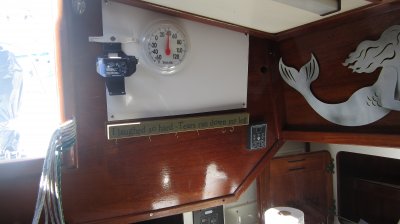 17-019 Dana - Aft Bulkhead 171703-1.jpg2.3 MB · Views: 158
17-019 Dana - Aft Bulkhead 171703-1.jpg2.3 MB · Views: 158 -
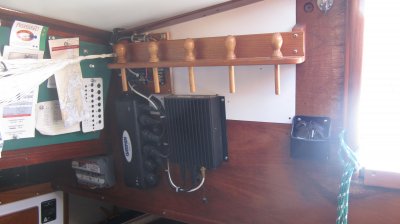 17-019 Dana - Aft Bulkhead 171703-2.jpg2.5 MB · Views: 151
17-019 Dana - Aft Bulkhead 171703-2.jpg2.5 MB · Views: 151 -
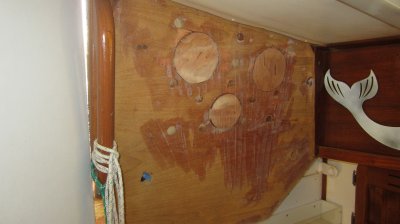 17-019 Dana - Aft Bulkhead 171703-3.jpg2.8 MB · Views: 151
17-019 Dana - Aft Bulkhead 171703-3.jpg2.8 MB · Views: 151 -
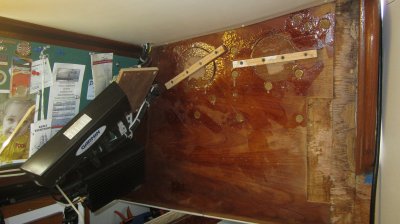 17-019 Dana - Aft Bulkhead 171703-4.jpg3.2 MB · Views: 149
17-019 Dana - Aft Bulkhead 171703-4.jpg3.2 MB · Views: 149 -
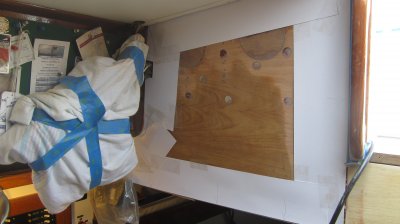 17-019 Dana - Aft Bulkhead 171703-6.jpg2.5 MB · Views: 150
17-019 Dana - Aft Bulkhead 171703-6.jpg2.5 MB · Views: 150 -
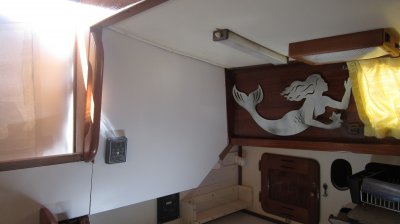 17-019 Dana - Aft Bulkhead 171703-8.jpg2.4 MB · Views: 157
17-019 Dana - Aft Bulkhead 171703-8.jpg2.4 MB · Views: 157 -
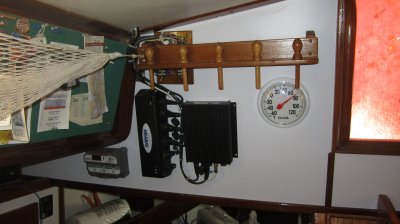 17-019 Dana - Aft Bulkhead 171703-9.jpg2.9 MB · Views: 149
17-019 Dana - Aft Bulkhead 171703-9.jpg2.9 MB · Views: 149 -
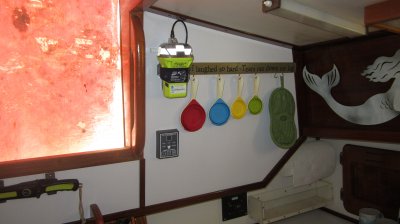 17-019 Dana - Aft Bulkhead 171703-10.jpg2.8 MB · Views: 153
17-019 Dana - Aft Bulkhead 171703-10.jpg2.8 MB · Views: 153 -
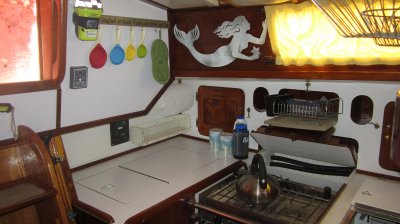 17-019 Dana - Aft Bulkhead 171703-12.jpg3 MB · Views: 153
17-019 Dana - Aft Bulkhead 171703-12.jpg3 MB · Views: 153


